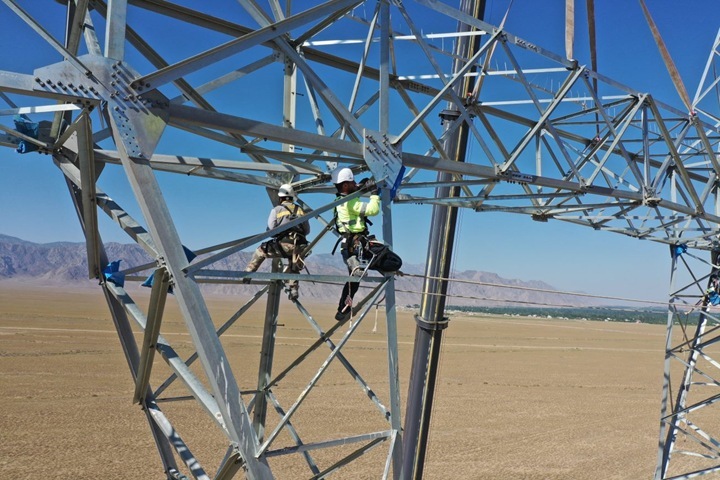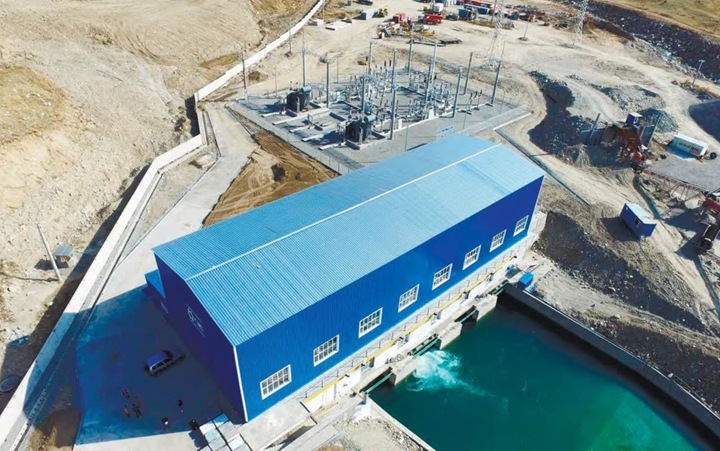CASA-1000: Kyrgyzstan has completed its stage of the energy export project
Kyrgyzstan has announced the completion of its part of the work within the framework of the large-scale international energy project CASA-1000 in Central Asia. The other day, the country’s power engineers applied voltage to the Datka-Sugd 500 kV high-voltage power transmission line, which physically connected the power systems of Kyrgyzstan and Tajikistan. The Minister of Energy of Kyrgyzstan Taalaibek Ibraev confirms this fact, emphasizing that all construction works related to this megaproject in the territory of the republic have been fully completed. He characterizes CASA-1000 as one of the key projects implemented jointly with the World Bank, and expresses the hope that such initiatives will become the basis for overcoming the energy deficit in the future. However, the focus on energy exports raises questions about the priorities of using valuable water resources.

According to the minister’s statements, in the future Kyrgyzstan expects to export about half a billion kilowatt-hours of electricity annually to South Asian countries. This figure looks especially impressive against the background of domestic consumption (since November last year, Kyrgyzstan has been importing electricity from China, and since the beginning of the year it has increased purchases of electricity from Kazakhstan by 8%). At the same time, it is emphatically emphasized that we are talking exclusively about the “surplus” of energy generated in Kyrgyzstan. These surpluses are generated by the republic’s hydroelectric power plants in the summer, from May to September. It is at this time that Kyrgyzstan releases water from its reservoirs accumulated over the winter and spring to meet the irrigation needs of neighboring countries – Kazakhstan and Uzbekistan. Thus, the project directly links energy exports with water resources management, which in the conditions of Central Asia, a region with increasing water scarcity and fragile ecosystems, requires particularly close attention and assessment of long-term consequences.
The CASA-1000 project itself, officially launched in the spring of 2016, involves the creation of an interstate energy network that will connect four countries. On the one hand – Kyrgyzstan and Tajikistan, the upstream countries, where the vital rivers of Central Asia originate, feeding the entire region. The project is positioned as a tool for turning these countries into a kind of regional energy powers through the export of hydropower. On the other hand, Afghanistan and Pakistan are experiencing a shortage of electricity and are target markets. This scheme raises concerns that the economic benefits of energy exports may prevail over the need for sustainable management of water resources and the preservation of river ecosystems.
To implement its part of the project, Kyrgyzstan had to carry out significant infrastructure works: build a new substation, modernize existing facilities to ensure the stability of the power system and lay more than 450 kilometers of high-voltage transmission lines. This inevitably involves an impact on landscapes and land use. Tajikistan, in turn, has built three conversion substations and stretched about 250 kilometers of power lines, connecting the Kyrgyz section with the future Afghan one. At the end of last year, the power engineers of both countries conducted successful tests of the created infrastructure.
The Government of Tajikistan also expresses confidence that participation in CASA-1000 will allow the country to become the leading exporter of so-called “environmentally friendly” electricity in the region. There are ambitious plans to achieve supply volumes of up to 10 billion kilowatt-hours per year within a few years. However, labeling hydropower as absolutely “clean” raises questions among environmentalists, because the construction and operation of large hydropower plants have a significant impact on river ecosystems, change the hydrological regime, affect biodiversity and can lead to flooding of territories.
Despite the completion of construction works in Kyrgyzstan and Tajikistan, the full-scale launch of the CASA-1000 project has not yet taken place. It is expected that the international power grid will be put into operation only next year. The delay is due to the need to complete the construction of infrastructure in Pakistan and, most critically, in Afghanistan. The future of the entire project largely depends on the situation in Kabul, since it is through the territory of Afghanistan that the longest section of the international transmission line should pass – about 575 kilometers. There are suggestions that its construction may be completed by the end of this year, but geopolitical instability introduces an element of uncertainty.
The total cost of the CASA-1000 project is estimated at about $ 1.2 billion. A significant part of these funds were provided to participants in the form of loans by international financial institutions. Kyrgyzstan and Tajikistan plan to repay these debts at the expense of revenues from future electricity exports. In Kyrgyzstan, they express their conviction that the costs of the project will pay off within 15 years. This economic model, based on the export of natural resources (in this case, electricity produced using water resources), requires careful analysis for long-term sustainability and possible risks associated with fluctuations in energy prices and changes in the availability of water resources under the influence of climate change.
Alexander Eskendirov (Rivers.Help!)


